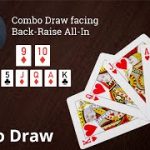Poker Tips Video Source & Information:
Getting check raised on the flop can put your in tough spots when you dont have the nuts. In this episode I will show you one of the ways to analyze your hand and figger out whether you made the correct play or not playing pot limit omah. Poker is a great game and even more fun when you become better at it! Good Luck & Enjoy!
▬▬▬▬▬▬▬▬▬▬▬▬▬▬▬▬▬▬▬▬▬
I am one of the coaches in the PLO Mastermind. If you want to check it out. http://www.plomastermind.com
Check out the PLO Mastermind member’s testimonials and reviews to see what they have to say about it. https://plomastermind.com/reviews/
▬▬▬▬▬▬▬▬▬▬▬▬▬▬▬▬▬▬▬▬▬
Join our Black Card affiliate program! Link your account and earn additional cash rewards in our weekly rake chase leaderboard or play against me and other PLO Mastermind Coaches in our monthly member freeroll The Big BAAAM! For more information go to: https://plomastermind.com/black-card/
▬▬▬▬▬▬▬▬▬▬▬▬▬▬▬▬▬▬▬▬▬
You can watch me play Pot Limit Omaha cashgames on https://www.twitch.tv/luukbotter
Follow me on Instagram https://www.instagram.com/luukbotter86/
Follow me on Twitter https://twitter.com/LuukBotter
Join me and many other Pot Limit Omaha players on https://discord.gg/KTRWAHc
#potlimitomaha #lowstakesplo #pokerstrategy
Source: YouTube








Hi Luuk, nice job. I´ve seen in micro & low stakes that people goes all in this kind of spots near 100% of the time. Thanks for showing this analysis.
keep up good work luuk
In the video I accicentally used an incorrect stacksize in Pokerjuice. This one was set on 100bb instead of the actual 126bb as a start. Looking back into my analysis i think the overall thought process is still valuable. Especially the way to analyse the hand and get a better understanding of a spot like this. After doing some more research on this particular hand it became clear that the outcome is very close when getting raised. Being deeper is more beneficial for us as we will have more implied odds. If we would have been sitting at 100bb actually continuing here becomes very marginal vs a potsize check raise which will include very little bluffs. Just wanted to share this with all of you that the actual continue against the raise isnt making is that much money. As mentioned, I still see value in the way analyzing the hand, which is why i will keep up this video, even though the actual stacksize and outcome wasnt 100% the way it should have been. GG and thanks for watching.
sorry for my ignorance, but when analysing through PokerJuice, and giving a range, shoud we still give him the range that we block, we giving AA with the Nut flush draw, but we have the NTFD ?! Thanks Luuk
You mentioned that your flop bet sizing should be slightly bigger. If we do go for a larger sizing (40% pot seems good here) then this should give us the required equity to stack off.
As you showed using the equity chart for various turn cards, our equity distribution across turns is going to be very polarised and hence this hand will realise poorly at a low SPR. If we bink a diamond we may not get many more calls out of our opponents linear range and if we brick we will not have enough equity to continue vs a Jam. Due to our hand's poor future street visibility but decent equity, I think a flop jam is best.
However, MonkerSolver is unlikely to encounter this node as potting into a polarised range with a linear one with little to no equity vs the north pole is suicide – folding out all the weak holdings and getting action from holdings with decent equity or the nuts.
Disclaimer: This videos purpose seems to be to come up with the best response vs a BB with microstakes population tendencies and provides good insight, but we out to tread carefully with such assumptions.
By the way you can also use the PEEL & STACK-OFF Modul from PJ. It calculates your EV, when you peel villains raise on the current street and stack off on next street if your avg stackoff equity is over SOEQ_NS(Villain is commited with his whole range, that means he will stack off no matter which card falls on the next street). Keep up the nice work!!
Great content as usual. If we add some bluffs in that x/r surely the 38% goes up and shoving becomes "profitable"? Now whether people ever x/r bluff that spot is another story.
Thanks for the great content! I was wondering how you know what the cutoff is for the number of cards profitable for stacking off on the turn is? In this example we can profitably stack off on 20 turn cards, but what if it had been 15 turn cards? Or 10? How do we know where the line is? And I assume amount of equity on each turn will also effect this. Thanks.
Gr8 video Mr bot er
The equity is different because you are blocking the nut flush draw.